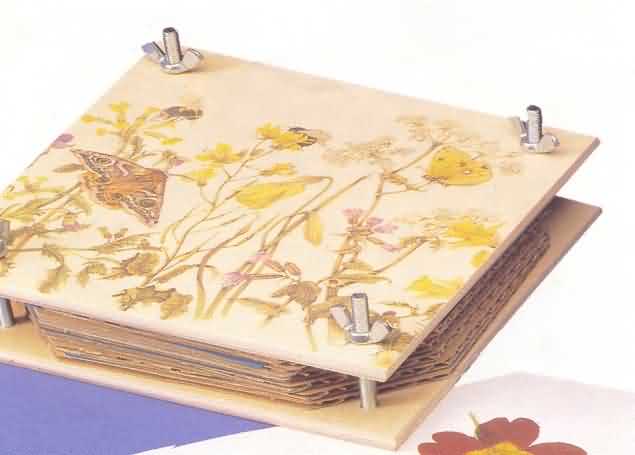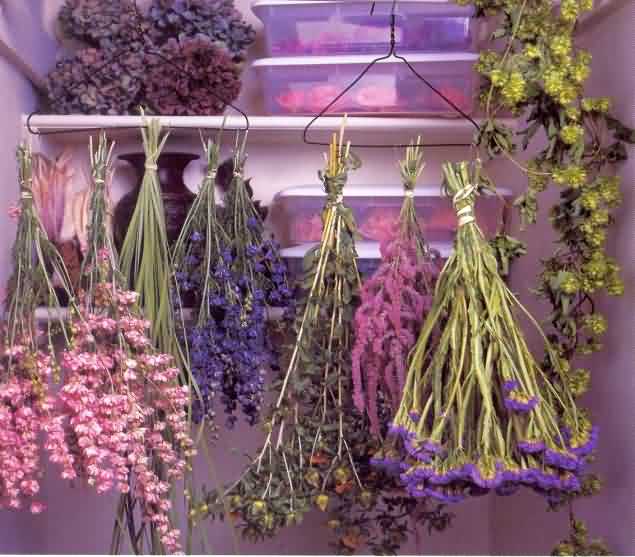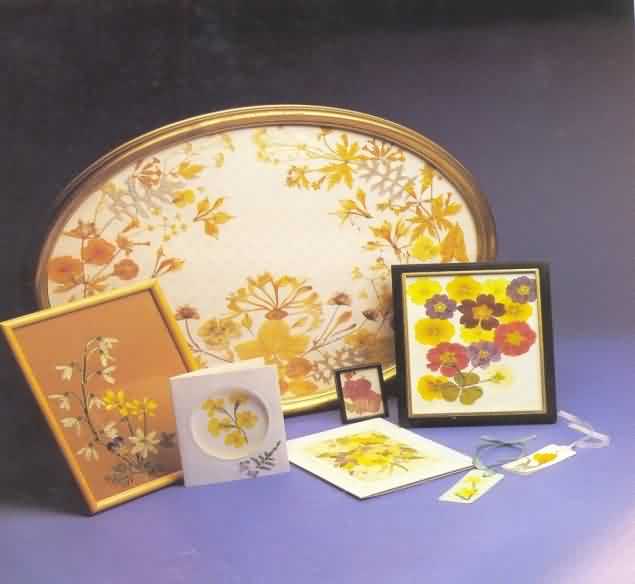फूल निर्जलीकरण: ग्रामीण लोगों के लिए एक लाभदायक व्यवसाय
Floriculture occupation has become a lucrative business in many parts of the world. Cut flower is one of the main components of floriculture trade. Shelf-life of cut flower is restricted for few days.
Despite the use of best flower preservatives for improvement of keeping quality and enhancement of vase life, the cut flowers cannot be kept for a long time. Non- availability of flowers during demand is another crisis.
Existing floriculture market is dominated by standard well utilized ornamental species/varieties. But in modern floriculture, there will always demand and necessity for new products and flower lovers always seek “something new.”
There are wide ranges of wild/ unutilized/ underutilized plant species which have the potential for commercial exploitation in different forms. We use only selected plants for our basic requirements. Thousands of wild plants have great economic and cultural importance and tremendous market potential throughout the world. There is an increasing interest throughout the world, in “neglected and underutilized crop species” (NUS). Neglected and underutilized crop species should be identified for new uses.
Rural and hilly areas are covered with different types of colourful flowers and foliage at different seasons round the year and all these are wasted under natural process. The entire seasonal colourful vegetations can be converted into value added products by using dehydration technique.
Dehydration technology can also be exploited for dehydration of promising colourful cut flowers in its original colour and shape for long term enjoyment and for commercial utilization of unutilized/underutilized plant species.
Dry flowers that are near natural, dried and preserved, have an everlasting value that can be cherished for longer periods and require little care. Dry flower market has grown exponentially as consumers become “eco-conscious” and chooses dried flowers as they are eco-friendly and biodegradable alternative to fresh flowers.
There is large potential to develop the dry flower industry in our country and to provide employment to house wives, unemployed youths and rural women. Simplified indigenous techniques have been developed by which flowers, branches, twigs, foliage etc. retain their fresh look for several months or even years.
The original shapes, colours and size remain as they were before dehydration and, thus, making them highly suitable raw materials for interior decoration and may be enjoyed for a long time and can be
Methods:
The best thing is to start a dehydration unit that very cheaper infrastructure is required. Different methods have been standardized by the NBRI, Lucknow, which is a pioneer institution to carry out the research work on flower dehydration. Mainly two methods are commercially viable i.e. Press Drying and Embedding & Drying. Naturally available unutilized flora and cultivated colourful annuals can be dehydrated through press drying. Standard cut flowers and other attractive flowers can be dehydrated in its original colour and shape through embedding and drying using either hot air oven or micro wave oven or solar cooker.
1. Press Drying of flowers:
The flowers and foliage are kept in blotting sheet/news paper and pressed dried with the help of “Plant Press”. The plant press has been specially designed in a very simple way. The plant press is made up of two wooden board fixed with nuts and bolts at four corners.
The size of plant press may vary (6" X 12" to any desired size). Collected leaves and flowers are kept between blotting sheets and one type of leaves/flowers is always pressed in one sheet.
All blotting sheets containing leaves/flowers are kept between two ply boards and tightened with nut and bolt. The materials may be kept at room temperature for dehydration. Blotting sheets are changed every 3rd and 5th day to avoid fungal effect/ contamination. This helps maintenance of original color of flowers and leaves. For quick drying, the pressed materials may be kept in hot air oven at 60o C.
Drying of Flowers.
2. Embedding and Drying:
Flowers are embedded either in sand or in silica gel in earthen/ plastic/ tin/ glass pots and pots are kept for dehydration in hot air oven / micro wave oven / solar cooker. The hot air oven is thermostatically controlled.
Hot Air Oven: The temperature is maintained 40o- 45oC.
Microwave Oven: Flowers are dehydrated within 5 – 10 minutes. Pots after taking out from micro wave oven are kept for two hours at room temperature for setting.
Solar Cooker: Flowers can be directly embedded in the container of solar cooker and it can be dried under sun. The time of exposure vary according to day temperature. The solar cooker can also be operated electrically. Solar cooker will be most suitable for rural women. They can cook their food in solar cooker and rest of the time can utilize for dehydration work.
Freeze Drying: The flowers are arranged in the specimen chamber, and then these are frozen unto -35oC. By eliminating the water, the flowers dry up with life freshness and retain better integrity and more durability.
Polyset Drying: It is a polymer preservation method, which is applied to the flowers and foliage about 45 minutes before drying. This method lessens the drying time and improves the intensity of flower colour. It also minimizes shattering and wrinkling of the petals which may occur during drying.
Flowers drying Methods
Preserving of Ornamental Plant:
Ornamental plants are commonly preserved by the treatment of humectants. Humectants are hygroscopic chemicals which help to maintain the suppleness of dried plant materials by attracting water vapor from the surrounding atmosphere. The preserved plant material is less brittle than dried material, making it less prone to shattering and mechanical damage. The material is more lifelike in appearance and touch. The following humectants are used to preserve plant tissue:
Sugar and sugar alcohols (e.g. glycerol)
Polyols (e.g. polythene glycol)
Salts (e.g. KCL)
Quaternary Ammonium Compounds (e.g. Comfort)
Table 1. Suitability of dehydration technique
|
Methods |
Suitable plants |
|
Air Drying |
Acroclinum, Helichrysum, Limonium |
|
Press Drying |
Candytuft, Chrysanthemum, Euphorbia, Lantana, Ixora, Thuja, Mussaenda, Golphimia nitidia, Pentas morn, Roses, Verbena, Larkspur, Pansy, Grasses, Garden fern, Foliage of Cassia biflora |
|
Hot Air Oven Drying
|
Acroclinum, Chrysanthemum, Candytuft, Gerbera, Gomphrena globosa, Helichrysum bracteatum, Euphorbia, Delphnium, Rose, Zinnia, Bougainvillea, Narcissus, Dahlia, Gladiolus, Marigold, Nymphaea spp. |
|
Microwave Oven Drying |
Antirrhinum majus, China aster, Small Chrysanthemum, Dahlia (pompon),Dianthus caryophyllus, Bougainvillea, Gerbera, Gladiolus, Lagestroemia indica, Narcissus, Phlox, Ixora coccinea |
Table 2. Drying period of flowers & foliage
|
Flower & Foliage plants |
Hot Air Oven Drying (in hours) |
Press Drying (in days) |
|
|
350- 400C |
450- 500C |
||
|
Acroclinum |
- |
48 |
- |
|
Acalypha |
- |
- |
14 |
|
Aster |
- |
48 |
- |
|
Antigonal |
- |
48 |
- |
|
Azadirachta indica |
- |
- |
14 |
|
Bamboo |
- |
- |
14 |
|
Brassica |
- |
- |
25 |
|
Bougainvillea |
48 |
- |
8 |
|
Caeselpinia |
- |
- |
13 |
|
Candituft |
48 |
- |
- |
|
Chrysanthemum |
- |
45-48 |
- |
|
Dahlia (pompon) |
72 |
- |
- |
|
Digera muricata |
- |
- |
12 |
|
Digitaria setigera |
- |
- |
12 |
|
Echinochloa colonal |
- |
- |
12 |
|
Fern |
- |
- |
9 |
|
Ixora |
- |
36 |
11 |
|
Marigold Small |
- |
48 |
- |
|
Marigold Large |
- |
72 |
- |
|
Mimusops |
- |
- |
12 |
|
Mussanda |
- |
- |
18 |
|
Narcissus |
75 |
- |
- |
|
Nymphaea |
- |
120 |
- |
|
Oplisnemus spp. |
- |
- |
16 |
|
Oplisnemus hirtellus |
- |
- |
11 |
|
Pansy |
60 |
- |
- |
|
Phlox |
- |
- |
29 |
|
Polygonum spp. |
- |
- |
16 |
|
Sapium cebiferum |
- |
- |
14 |
|
Setaria glauca |
- |
- |
12 |
|
Sida acuta |
- |
|
16 |
|
Statice |
- |
48 |
- |
|
Synedrella nudiflora |
- |
- |
16 |
|
Thuja |
- |
- |
28 |
|
Vernonia cinerea |
- |
- |
18 |
|
Wedelia chinensis |
- |
- |
11 |
|
Zinnia linearis |
- |
48 |
- |
|
Zinnia lilput |
- |
72 |
- |
Tips for quality flower dehydration:
- Collection of flowers & foliage should be done one or two days after irrigation.
- Collect the material after dew and surface moisture is evaporated.
- Collect the flowers in dry season or on a sunny day.
- Faded materials should be discarded.
- Materials should be embedded immediately after plucking.
- Only one type of flower should be embedded at one time.
- Flower should be spread uniformly on blotting paper for ensuring uniform pressure.
- Soft brush should be used to clean any unwanted material sticking to the dry flowers.
Floral Craft:
Dehydrated flowers and foliage can be used for designing distinctive, fascinating and artistic decorative items e.g. greeting cards, wall plates, calendar, landscapes, etc. Floral Craft means skilful and artistic use of floral materials for making saleable items for decoration purpose.
Uses of Dried Ornamentals:
These dried items may be used with fresh flowers or alone as :Floral arrangements, bouquets, gift pack, festive decorations, collages, flower pitchers, floral balls, pomanders, wall sceneries, greeting cards, wedding cards, sweet smelling pot porris.
The following items are required for preparation of greeting cards, floral designs, pictures, landscapes, calanders etc.
- Bristle board/ivory card paper
- Velvet paper of different colours
- Adhesives
- Brush
- Needle
- Scissor
- Blade
- Forceps
- Trimmer
- Glass table top
- Dried flowers and leaves
- Envelops
Methods for preparing of greeting cards:
First of all plain card of required size are prepared. Velvet papers of preferred colour and size are trimmed and pasted on the card leaving a margin all around card. The card is kept under the glass table top for a few minutes to dry.
The velvet paper serves as background to floral design. Background matching dried flowers and leaves are selected and they arranged as per desired design on the velvet sheet and they are fixed with the help of adhesives. The card is placed again under the glass table top about half an hour. The card should be stored in a dry place.
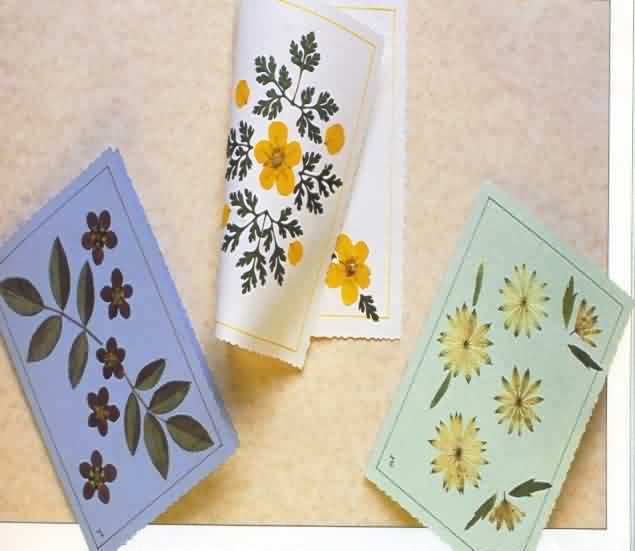

Greeting Cards & wall hangings of dried flowers
Flower Arrangement in Sealed Glass/ Plastic containers:
The following items are required
- Transparent glass/plastic containers
- Glass disc
- Thermocol sheets
- Velvet sheets of different colours
- Scissors
- Forceps
- Tweezers
- Adhesives
- Sealing wax
- Enamel paint
Methods:
Thermocol sheet is cut in size of mouth of container. Velvet sheet is also cut in the same size. Velvet piece is pasted on the thermocol. Dry flowers are arranged and fixed on the thermocol with the help of glue. The height of flowers depends upon the size of container. The flowers are covered by the container and the bottom of container is fixed on the glass disc, which is slightly bigger than the mouth of the container with the help of adhesives. The container may be kept for about half an hour in the oven at 40o- 45oC. The bottom of the container is painted with the enamel paint.
Conclusion:
A Cottage scale industry based on dehydrated floral craft can come up for self employment of youths and for earning money to the house wives as well as rural women by providing them with a part time creative occupation. It takes little practice but the results are rewarding. Present techniques have the ability to develop new markets through diversification of products. There is need to create sufficient awareness about the potential of this technology. Proper education/training to farmers/florists, rural women, house wives, unemployed youths etc is necessary about the dehydration technology, true novelty of the products utilizing neglected and underutilized plant.
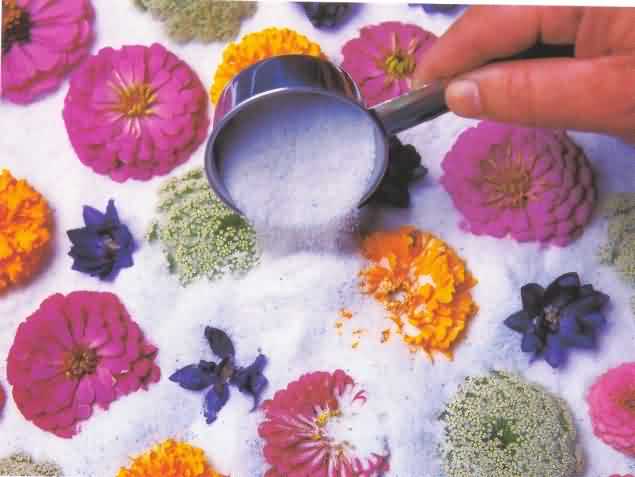
Embeding of flowers in silica gel
Authors:
Krishna S. Tomar*, Sunil Kumar, R.C. Shakywar
College of Horticulture and Forestry, Central Agricultural University,
Pasighat -791 102 Arunachal Pradesh
*E-mail:


